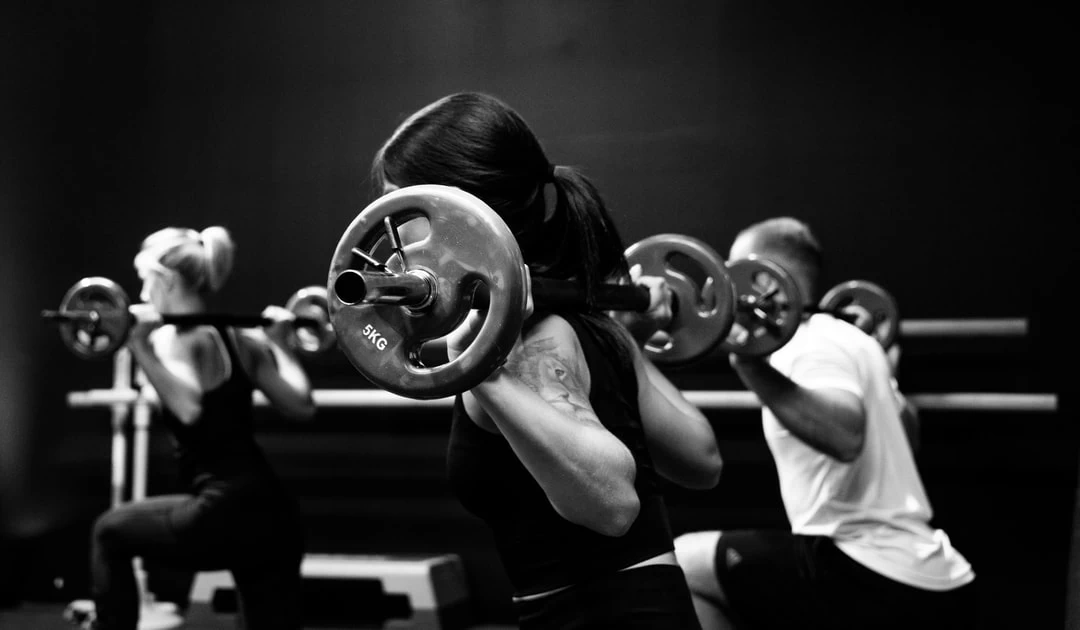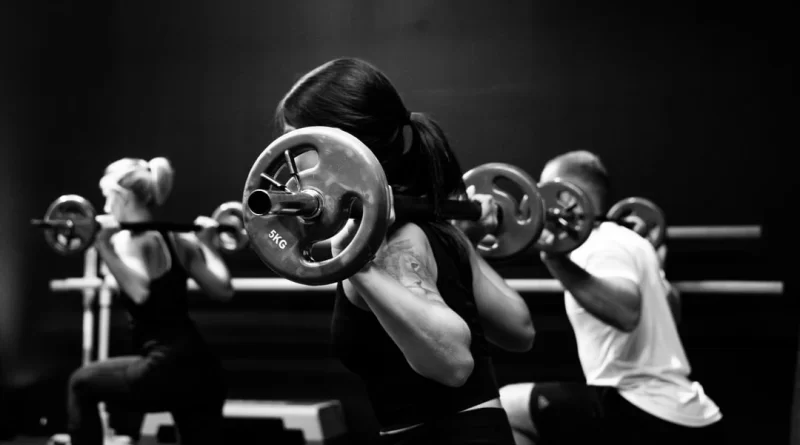How to Create a Sustainable Home Workout Routine

With busy schedules, limited access to gyms, or a desire to save money, more people are turning to home workouts. But staying consistent and making it sustainable over time can be challenging. Whether you’re just starting out or trying to level up your fitness routine, building a sustainable home workout routine is key to achieving long-term health benefits without burning out. Here’s how to create one that fits your lifestyle, goals, and environment.
Why a Sustainable Home Workout Routine is Important
Before diving into how to set up a routine, it’s important to understand why sustainability matters. Fitness isn’t about quick fixes or short bursts of effort. Real, lasting results come from consistent and balanced effort over time. A sustainable home workout routine will help you:
- Avoid burnout and overtraining
- Build long-term habits
- Keep your workouts enjoyable and varied
- Accommodate life’s changes without losing progress
- Prevent injuries by allowing proper recovery
When a workout routine is sustainable, it becomes a natural part of your lifestyle, rather than something you need extra willpower to stick to every day. Let’s explore how to create such a routine.
Step 1: Define Your Goals
Setting clear, realistic goals is the foundation of any workout plan. Ask yourself what you want to achieve:
- Do you want to lose weight?
- Gain muscle?
- Increase flexibility?
- Improve cardiovascular health?
Understanding your primary goal will help you choose the right types of exercises, the frequency of your workouts, and the intensity level that fits your needs.
Once you’ve identified your goals, break them into short-term (1-3 months), mid-term (3-6 months), and long-term (6-12 months) targets. For example:
- Short-term goal: Increase endurance and complete a 20-minute workout without feeling fatigued.
- Mid-term goal: Lose 10 pounds through a combination of cardio and strength training.
- Long-term goal: Build enough strength to complete a home-based HIIT routine or participate in a fitness challenge.
Be specific, as measurable goals are easier to track and celebrate, keeping your motivation high.
Step 2: Assess Your Environment
Your workout space will greatly influence what type of exercises you can do and how comfortable you are sticking to your routine. Look at the space you have available and think about how it can be optimized for fitness. Whether you live in a small apartment or have a spacious home, you can still create an effective workout area.
Things to Consider:
- Space: Choose a spot where you can comfortably move around, especially if you’re doing exercises like lunges, squats, or yoga. Clear the area of any hazards like clutter or furniture.
- Equipment: While you don’t need to buy a lot of expensive equipment, a few key pieces can make a big difference. A yoga mat, resistance bands, dumbbells, or a kettlebell are versatile and easy to store. If you have no equipment, you can still do bodyweight exercises like push-ups, squats, and planks.
- Noise: Consider whether noise will be a factor in your routine. If you’re living with others, opt for quiet exercises like yoga or pilates if needed, or choose a time when others won’t be disturbed.
Step 3: Choose the Right Workouts for You
A sustainable routine is one that you actually enjoy. Choose exercises and workout types that align with your goals and that you look forward to doing. Here are some options to consider:
1. Bodyweight Exercises
Bodyweight exercises require no equipment and can be done almost anywhere. They are ideal for building strength, improving balance, and boosting endurance. Some effective bodyweight exercises include:
- Push-ups
- Squats
- Lunges
- Planks
- Burpees
2. Cardio Workouts
Cardio is essential for heart health, burning calories, and improving endurance. You don’t need a treadmill or stationary bike to get your cardio in—there are plenty of at-home options:
- Jump rope
- High knees
- Jogging in place
- Mountain climbers
- Dancing
3. Yoga or Pilates
If you’re looking for a more low-impact workout that helps with flexibility, core strength, and mental relaxation, yoga or pilates can be great additions to your routine. Both are also excellent for recovery days or when you’re short on time.
4. Resistance Training
Incorporating resistance exercises, whether through resistance bands, dumbbells, or kettlebells, can help you build and maintain muscle. Aim to target all major muscle groups for a well-rounded routine: legs, back, chest, arms, and core.
5. HIIT (High-Intensity Interval Training)
HIIT workouts are time-efficient and effective for burning calories and improving cardiovascular health. The combination of short, intense bursts of exercise with rest periods keeps your heart rate up and maximizes fat burn.
Sample Weekly Schedule
Monday: Full-body strength training (bodyweight or resistance exercises)
Tuesday: Cardio (jump rope, running in place, or HIIT)
Wednesday: Yoga or pilates (active recovery)
Thursday: Upper body strength (push-ups, dumbbells, or resistance bands)
Friday: Lower body strength (squats, lunges, glute bridges)
Saturday: Cardio or full-body HIIT
Sunday: Rest or light stretching
Step 4: Start Slow and Build Gradually
When you start a new workout routine, it’s easy to get overly excited and do too much too soon. This can lead to burnout, injury, or frustration. Instead, focus on consistency over intensity in the beginning.
Key Principles:
- Frequency: Start with 3-4 days a week and gradually work your way up to 5-6 days as your fitness improves.
- Duration: Begin with 20-30 minute workouts. Over time, you can increase the duration to 45 minutes to an hour, but shorter workouts are still effective as long as you remain consistent.
- Progression: Track your progress and increase the difficulty gradually by adding weight, increasing reps, or doing more challenging variations of exercises. For example, if you’re doing push-ups on your knees, aim to move to full push-ups as you gain strength.
Step 5: Prioritize Recovery
One of the biggest mistakes people make when starting a workout routine is neglecting recovery. Recovery days allow your muscles to repair and grow, which is essential for making progress and avoiding injury. Here’s how to recover smartly:
- Rest days: Take at least one full rest day a week, especially if you’re doing high-intensity workouts.
- Active recovery: On rest days, light activities like walking, stretching, or yoga can help promote blood flow and reduce muscle soreness.
- Sleep: Aim for 7-9 hours of sleep a night. Sleep is crucial for muscle recovery and overall energy levels.
Step 6: Stay Accountable and Track Progress
It’s easy to lose motivation when you’re working out at home, but tracking your progress and staying accountable can make all the difference.
- Workout log: Keep a notebook or app where you track what workouts you do, how you feel, and any progress you notice.
- Set small milestones: Celebrate your achievements along the way. Whether it’s holding a plank for an extra 30 seconds or moving up in weights, small wins keep you motivated.
- Get support: Share your goals with a friend or family member, or join an online fitness community to stay accountable.
Step 7: Make Adjustments Over Time
Life happens, and your workout routine may need to change with it. Whether you’re facing a busy schedule, an injury, or just want to mix things up, don’t be afraid to adjust your routine. The key to sustainability is flexibility. Be open to:
- Changing the time of day you work out
- Shortening your workouts when time is tight
- Swapping in new exercises to keep things interesting
- Modifying your routine based on your current fitness level or goals
Conclusion
Creating a sustainable home workout routine is about finding what works for you and making exercise a part of your daily life. By setting clear goals, choosing exercises you enjoy, building up gradually, and prioritizing recovery, you can achieve long-term success in your fitness journey. Remember, consistency is key—so take it one step at a time and enjoy the process of becoming healthier and stronger.

